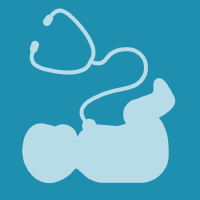Topic Menu
► Topic MenuTopic Editors

Children’s Diseases, Family Management, and Quality of Life
Topic Information
Dear Colleagues,
Though awareness of the impact of a child’s disease on family quality of life (QoL) has recently been increasing, there is a need to measure this impact in the clinical setting to inform those providing support to the family. A child’s chronic health condition or disability can have an impact on the quality of life of the whole family. In the case of chronic diseases, such as genetic rare diseases, there is a reduction in quality of life, along with disability, depending on the type of disease. Potential topics for this Special Issue include all issues related to child diseases, family management, and quality of life, especially with rare and chronic diseases.
Prof. Dr. Robert Śmigiel
Dr. Anna Rozensztrauch
Topic Editors
Keywords
- child
- family
- caregivers
- rare disease
- quality of life
- genetics
- rehabilitation
- diagnosis
- surgery
- child disease
Participating Journals
| Journal Name | Impact Factor | CiteScore | Launched Year | First Decision (median) | APC |
|---|---|---|---|---|---|

Cancers
|
4.4 | 8.8 | 2009 | 20.3 Days | CHF 2900 |

Children
|
2.1 | 3.8 | 2014 | 15.6 Days | CHF 2400 |

Diseases
|
3.0 | 3.7 | 2013 | 22.7 Days | CHF 1800 |

Healthcare
|
2.7 | 4.7 | 2013 | 21.5 Days | CHF 2700 |

Journal of Clinical Medicine
|
2.9 | 5.2 | 2012 | 17.7 Days | CHF 2600 |

Preprints.org is a multidisciplinary platform offering a preprint service designed to facilitate the early sharing of your research. It supports and empowers your research journey from the very beginning.
MDPI Topics is collaborating with Preprints.org and has established a direct connection between MDPI journals and the platform. Authors are encouraged to take advantage of this opportunity by posting their preprints at Preprints.org prior to publication:
- Share your research immediately: disseminate your ideas prior to publication and establish priority for your work.
- Safeguard your intellectual contribution: Protect your ideas with a time-stamped preprint that serves as proof of your research timeline.
- Boost visibility and impact: Increase the reach and influence of your research by making it accessible to a global audience.
- Gain early feedback: Receive valuable input and insights from peers before submitting to a journal.
- Ensure broad indexing: Web of Science (Preprint Citation Index), Google Scholar, Crossref, SHARE, PrePubMed, Scilit and Europe PMC.

